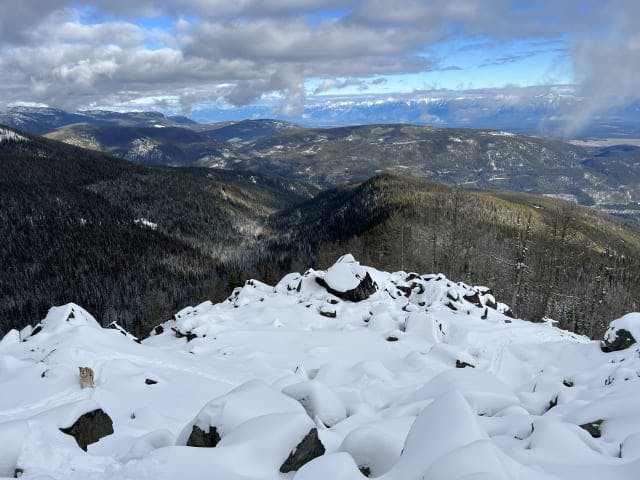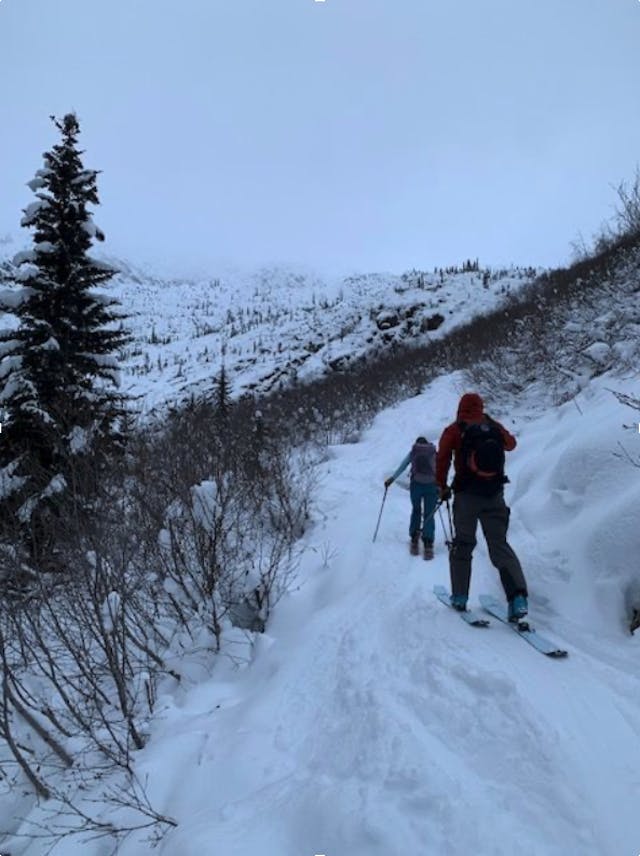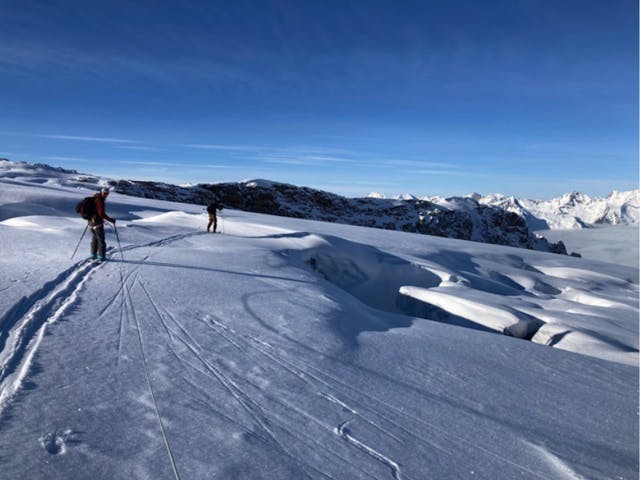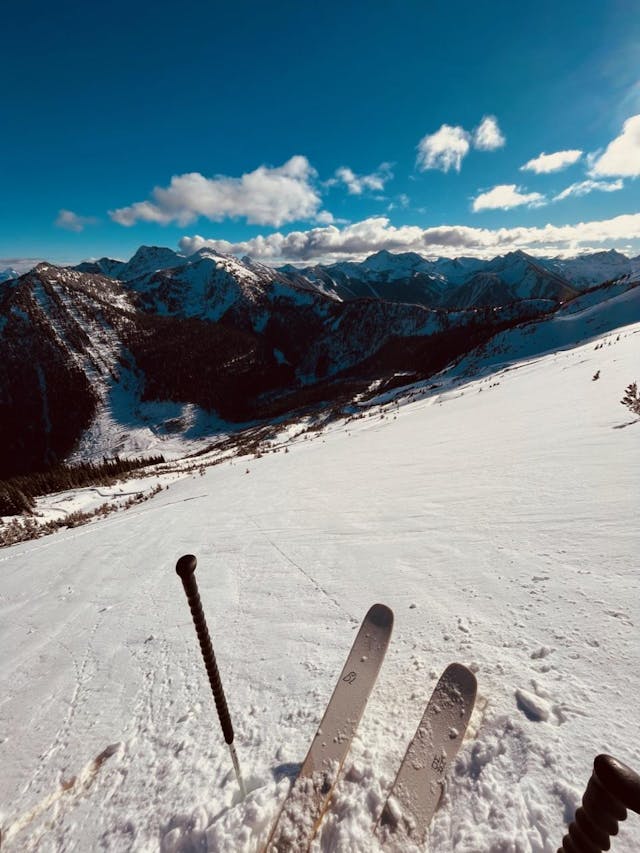- Date
- mardi 28 novembre 2023
- Auteur
- Colin Garritty, Lead Field Technician/Forecaster - Vancouver Island

Denver Creek from the MIN.
Unless you’re up on the northwest coast of BC or in the Yukon, it’s looking pretty rough out there for late November. Low tide is in full effect with rocks, stumps, and other nasty early-season hazards dominating the terrain in Western Canada.
Avalanche danger is already at Low for all elevations in many regions. The main concern at the moment is what’s under, or barely under, the snow.
When we think about hazards right now, avalanches are on the list but they actually aren’t the biggest part of the picture. Here are some of the hazards we’re thinking about:
- Rocks. Need we say more? *Cue Jaws theme music*
- Creeks. Many are still wide open and any bridges that have formed over them are probably still very weak.
- Crusts that are forming on solar aspects. These are bad conditions for catching a ski edge and yard-sale-ing in a boulder field. In fact, it doesn’t get much worse.
- Boilerplate, bulletproof, burly... Call it what you want, but there is a lot of very hard snow out there right now. It’s bad enough when breakable crust knocks you off your line. It’s another thing when your edge won’t bite at all, especially in a steep place. You do not want to go for a slip and slide down a couloir in these conditions.
- Areas where facets already exist at the base of the snowpack (think interior regions more than coastal). This basal layer is likely weakening more than it is strengthening right now. With a human trigger, isolated thicker deposits in steep gullies could break away from the sugary basal snow, or from scree or a smooth rock slab. This is one of our only avalanche concerns at the moment.

Photo: Brad Lorriman
The conditions aren't stellar for everyone who loves winter activities in the mountains, but scrambling, ice climbing, and alpine climbing conditions have actually been pretty great. It is important that those getting out there stay vigilant for the same hazards that might affect your travel in other dry spells in the winter. For the deep snow lovers though, the waiting game continues.
Be patient, winter will come. In the meantime, it’s a great time to brush up on your rescue skills, dial in your gear, and do some snow dances! So when winter does show up to the party, you’ll be ready for it.

Young's Traverse, Glacier National Park. Photo: Julie Marshall.

Photo shared to the ACMG Mountain Conditions Report.